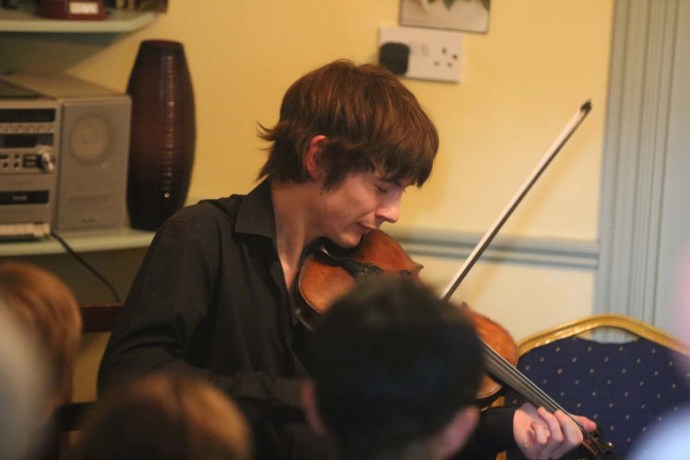So what’s the word for someone from Dingle? Maybe a Dingleling? Sorry about that.
And what if someone from Dingle spent a relaxing day touring the Dingle Peninsula? Well that would be Dinglelingdinglelingering wouldn’t it?
Well enough of this silliness. I am not a Dingleing but I would be quite happy to be.
7th August 2017. The weather forecast said scattered sunshine and showers. That was like a gold-plated invitation to spend the day outside. So I decided to go Dinglelingering.
The weather forecast however, luckily, was wrong. There was NO rain and lots and lots of sun. So a quick trip around the Peninsula saw me and my very worthy photo assistant for the day, Sophia, from Bavaria, a first time visitor to Ireland, doing a quick tour over Conor Pass to Dingle, Ballyferriter, around the Slea Head Road to Inch and back to Tralee.
The scenery is of course astonishing and a huge contrast to the magical winter wonderland I posted on my blog in March.
Link to dingle-peninsular-the-irish-alps
Here’s a few samples from the most recent visit. Glorious panoramic views from the Conor Pass; an elevated glacial lake way above the road; truly spectacular striations on the bare rock caused by glacial action; the coastline along Slea Head, Inch Beach; a busker, lots of tourists. Tourists yes but thankfully not the stream of buses you get in the Ring of Kerry. But after all it is August.


Elevated glacial lake above the waterfall on the Conor Pass

View from tht top of the Pass.
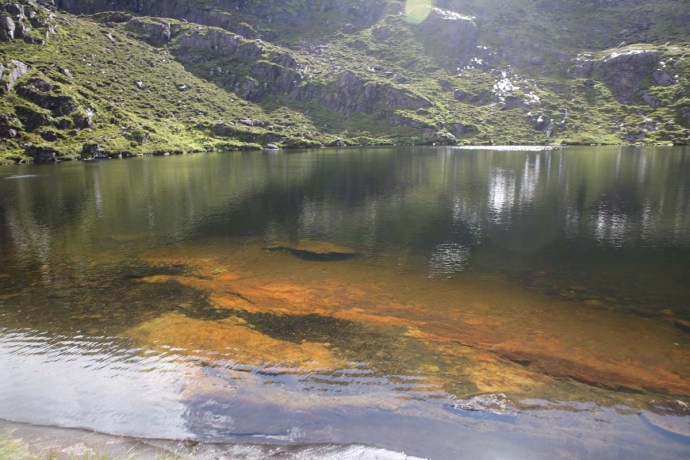
colours in the floor of the lake

Glacial striations on the edge of the lake, caused by movement of ice.



The water exits the lake by this narrow channel.


Lakes on the valley floor.








Beehive huts from 2,000 BC

Detail of a hut wall

Beehive hut wall and roof. Corbelled.

Inch Beach

Inch Beach
But that’s not what I wanted to talk about in this blog. I want to focus here on what I think is the highlight of a summer soirée in this part of Ireland.
Living on the Hedge.
I can’t speak for the rest of Ireland but Clare and Kerry are in late July and early August absolutely ablaze with a riot of colour lining the roadside. This is my fourth summer here but I never noticed this intensity of flora before. This year has produced magnificent displays of wild flowers. We had it earlier in the Spring with the Spring Gentian and orchids carpeting the Burren and then the incredible Whitethorn and now this vivid show.
Hedges are a major feature of the Irish roadside if you leave the N’s, particularly if you travel the byways – R’s and L’s. Most of the year you don’t notice them. A drab and featureless tangle of green or in winter, seemingly dead and leafless. And then the rest of the year, they are vigorous and compete with the tarmac making the roads considerable narrower. And they can block your unimpeded views of the countryside. But it’s a different story when they are in flower.
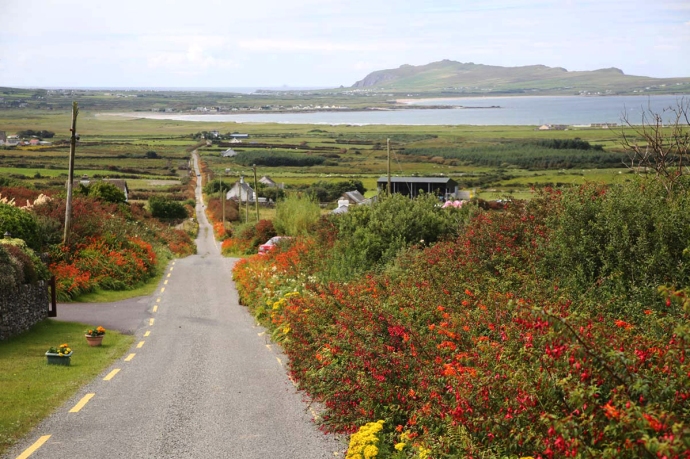

So here in Dingle I decided to have a closer look. This particular boreen is a part of the Cosán na Naomh or Saints Road, an 18km pilgrimage road to the foot of Mt Brandon. The magnificent backdrop is of the coast around Ballyferriter with the Three Sisters being prominent.

The hedge is a layered pastel of orange, red, white, yellow and purple. I was intrigued and wondered how much of this display was endemic. I knew fuchsia wasn’t. What about the rest?

So here is a bit of a rundown of the most obvious plants that make up this display. I’m sure I’ve missed heaps as I am not a botanist but it’s what my eyes and camera were drawn to.
Fuchsia. Fuchsia loves Ireland. I struggled to grow this back home in Australia. Too dry, too hot, too much sunshine. But here those issues are not a problem. You don’t see the many exotic varieties just the one purple and blue single bell shaped flowers. Of course the flowers are exquisite and despite its origin in Chile the bush has been so naturalised that it is the Cork county emblem.

Fuchsia
Wild Angelica. Standing out against the orange and red are the white many rayed umbels of this tall perennial. A native of Ireland

Wild Angelica
Brambles/Blackberries One of the pleasures of Ireland is the gathering of blackberries from the roadside. No worries about spraying as in Oz. This time of the year the brambles are flowering and developing berries. A taste of what’s to come. You have to look hard among the verdant growth but soon they will dominate. Native to Ireland but a pest in Australia.
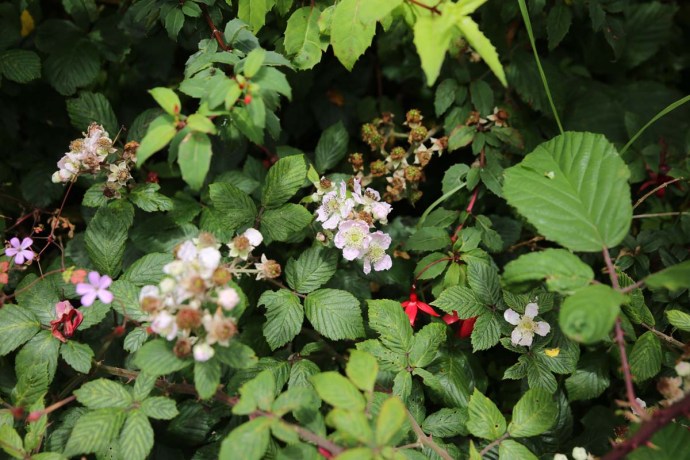
blackberries

Blackberries
Wild Carrot A tall erect plant with a cluster of white flowers. Native.
Centaury. Small 5 lobed pinkish red flowers, somewhat overpowered by its neighbours. Native

Centaury
Tufted Vetch. A splash of purple on long stalked racemes. Not so common here but ver abundant. Native

Tufted Vetch
Montbretia. The most startling plant. Long strap like leaves and multiple flower stems with bright orange funnel like flowers. I love the way this plant is described as a Naturalised Garden Escape. So definitely not a Native.

Montbretia

Montbretia
Meadowsweet Creamy-white scented flowers. 5 petals. Tall erect plant. Native
Common Knapweed / Hardhead Flowers are red-purple on erect stems. Height to 1m. Native.
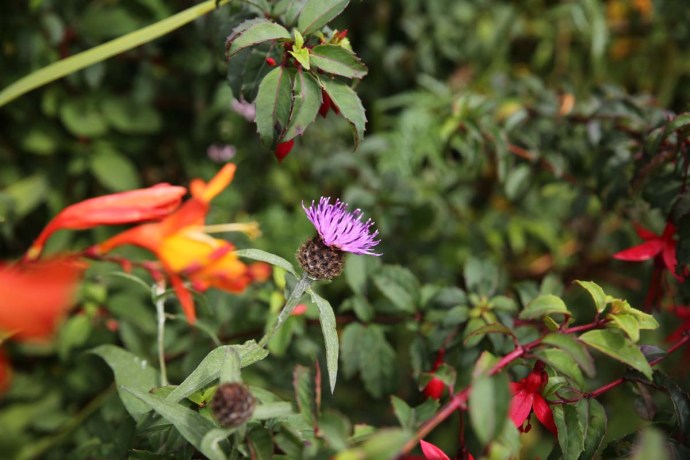
Common Knapweed
Hawksbeard. Splashes of yellow among the reds oranges and purples. Clusters of small yellow flowers with erect buds. Grows to about a metre. Native and very common.

Hawksbeard

Hawksbeard
So, turns out most of the plants are native. But and here’s the big but. The two dominant plants of the roadside are the Fuchsia and the Montbretia and both these are introduced. The hedges without these two plants would be very different and I’m guessing would be dominated by brambles with the other plants struggling to get a foothold.
If you are visiting Ireland in Summer, do take time to stop the car and have a look.






